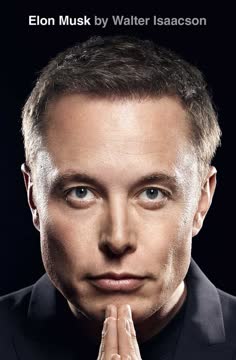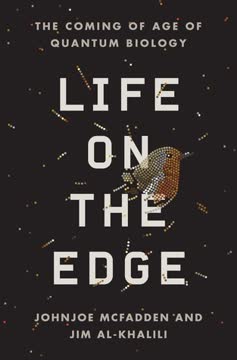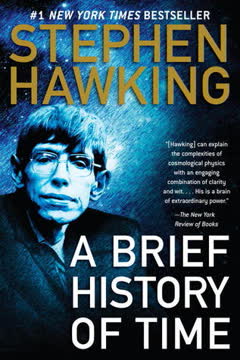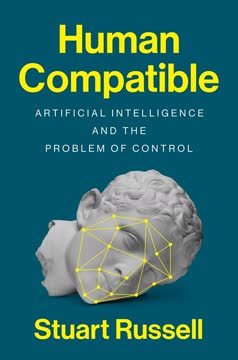Key Takeaways
1. The Fundamental Shift: Atoms to Bits
The change from atoms to bits is irrevocable and unstoppable.
Physical vs. Digital. The core argument is the fundamental difference between atoms (physical goods like books, CDs, newspapers) and bits (digital information). Atoms have weight, size, and are slow and expensive to move. Bits are weightless, travel at light speed, and are inexpensive to copy and distribute.
Economic implications. Historically, trade and business models were based on moving atoms. The digital age is rapidly changing this, especially for information and entertainment industries. Companies whose products can be rendered in digital form face a future driven by the instantaneous and inexpensive transfer of electronic data.
Examples of the shift:
- Music distribution moving from physical CDs to digital files.
- Information access shifting from physical libraries to digital ones.
- The cost structure of industries like publishing changing as inventory and shipping costs for atoms disappear.
2. Bandwidth: Infinite Potential, Paradoxical Use
Bandwidth is the capacity to move information down a given channel.
From trickle to downpour. Bandwidth, the capacity of a communication channel, is rapidly increasing, particularly with fiber optics, which offers almost infinite potential compared to older copper wires or limited radio spectrum. Fiber can transmit vastly more bits per second, enabling services previously unimaginable.
Less is more. Despite the potential for unlimited bandwidth, simply sending more bits isn't always better. Just as beginners overuse camera features, early digital media often squirts excessive data. Intelligent compression and understanding content allow for efficient use of bandwidth, sometimes making "less" data transmission more effective and meaningful.
Bandwidth considerations:
- Copper wires (twisted pair) are low bandwidth but widely installed.
- Fiber optics offer virtually infinite bandwidth, becoming cheaper than copper.
- Radio spectrum (ether) is finite and best saved for mobile communication.
- Data compression significantly reduces the bits needed for audio/video.
3. Digital Broadcasting: Beyond Picture Quality
The key to the future of television is to stop thinking about television as television.
Wrong problem focus. Early efforts in advanced television (HDTV) focused narrowly on improving picture quality (resolution, aspect ratio) using analog techniques, largely ignoring the transformative potential of digital technology. This was a mistake driven by old paradigms.
Digital flexibility. Being digital allows for scalability and adaptability. Instead of fixed standards for resolution or frame rate, digital signals can carry information about themselves (bits-about-bits), allowing receivers (computers) to process and display content optimally based on their capabilities and user preferences.
Digital TV benefits:
- Error correction for studio-quality picture/sound.
- Data compression allowing multiple channels in the same bandwidth.
- Scalability: Systems can adapt to different display technologies and resolutions over time.
- Bits-about-bits: Enables content-based recording, personalization, and multi-format delivery.
4. Regulation Challenges in the Bit Age
Copyright law is totally out of date. It is a Gutenberg artifact.
Analog rules in a digital world. Regulations designed for the analog world, such as FCC spectrum allocation and cross-ownership rules, struggle to apply to digital bits, which are fungible and can represent any type of media. Granting spectrum for "HDTV" can inadvertently create local "bit radiation" centers with flexible uses.
Blurring lines. The digital nature of media dissolves traditional boundaries between newspapers, television, radio, and data. Cross-ownership rules that prevented owning different media types in the same market become nonsensical when all media are just bits that can be commingled and delivered via any channel.
Regulatory friction:
- Spectrum allocation designed for specific analog media types.
- Cross-ownership rules hindering the commingling of digital content.
- Copyright law struggling with ease of copying, perfect copies, and formless data.
- The challenge of regulating "bit radiation" vs. specific content types.
5. Commingled Bits Create Multimedia
The mixing of audio, video, and data is called multimedia; it sounds complicated, but is nothing more than commingled bits.
Bits are bits. Because all media can be reduced to bits, they can be effortlessly mixed and reused. This fundamental property enables multimedia, which is the combination of audio, video, text, and data. Early multimedia was often just repurposing old content, but true indigenous multimedia is emerging.
Beyond repurposing. While media companies initially focused on reselling existing content libraries, the real potential of multimedia lies in creating new, intrinsically interactive experiences. This requires a gestation period for new ideas and vocabularies, moving beyond simple digital versions of old media.
Multimedia characteristics:
- Effortless mixing of different media types.
- Creation of new content forms native to the digital medium.
- Interaction is implicit, allowing users to explore information non-sequentially.
- Hypermedia links information chunks in multidimensional ways.
6. Interface Evolution: From Tools to Agents
The secret to interface design: make it go away.
Beyond physical design. Early computer interface design focused on making machines easier for smart people to use, treating it as an industrial design problem (like designing a teapot handle). This led to GUIs, mice, and keyboards, but often resulted in complex, frustrating interactions.
Intelligence is key. The future of human-computer interface lies in making computers more intelligent and capable of understanding humans. Instead of users having to learn complex commands or navigate cumbersome physical devices, the computer should learn about the user and anticipate their needs.
Interface paradigms:
- Early: Command-line, toggle switches (machine-centric).
- GUI: Graphical User Interface (desktop metaphor, direct manipulation).
- Multimodal: Combining speech, gesture, gaze (more human-like).
- Agent-based: Computers acting as personal assistants (delegation).
7. Virtual Reality: More Real Than Reality
VR can make the artificial as realistic as, and even more realistic than, the real.
Sense of "being there". Virtual Reality (VR) aims to create an immersive experience that gives the user a sense of presence in a simulated environment. This is achieved by providing sensory input, primarily visual (stereoscopic displays), that changes instantly with the user's movement.
Beyond simulation. VR is not just about replicating reality; it can enhance or surpass it. Flight simulators are more realistic for training than actual planes because they can simulate dangerous scenarios. VR allows experiencing situations with one's own body, offering powerful learning and entertainment possibilities.
VR challenges and potential:
- Requires high image quality and, crucially, rapid response time to head movement.
- Early systems suffer from visual artifacts (jaggies) and lag.
- Can create experiences impossible in the real world (e.g., swimming in a bloodstream).
- Consumer VR is being driven by the gaming industry.
8. Sensing Humans: Computers That See and Hear
It is time to make computers see and hear.
One-sided interaction. Current computers place the burden of interaction entirely on the human. They lack basic awareness of the user's presence, attention, or emotional state. This limits the potential for natural, conversational interaction.
Adding senses. Future interfaces will incorporate computer vision and audio processing to sense human presence, recognize faces and expressions, and understand speech beyond just words (e.g., tone, emotion). This allows the computer to adapt its behavior and communication style.
Sensing technologies:
- Computer vision: Recognizing faces, tracking gaze, understanding gestures.
- Audio processing: Segregating speech from noise, analyzing tone of voice.
- Touch/Force feedback: Allowing computers to sense and respond to physical interaction.
9. Speech: The Natural Interface for Small Devices
For all these reasons, the trend of increasing miniaturization is bound to drive the improvement of speech production and recognition as the dominant human-computer interface with small objects.
Beyond typing. Typing is not an ideal interface for everyone or every device. Speech offers a hands-free, intuitive way to interact with machines, especially as devices become smaller and keyboards/screens become impractical.
Speech recognition challenges. Historically, speech recognition research was hampered by focusing on difficult goals like universal speaker independence or perfect transcription of continuous speech. More achievable goals involve recognizing limited vocabularies in personalized, interactive contexts.
Speech as more than words:
- Carries parallel information like tone, emotion, and intent.
- Allows for interaction at a distance or while doing other tasks.
- Can include non-lexical sounds ("aha") as conversational protocols.
- Can be combined with other modalities like gaze and gesture for richer communication.
10. Delegation: The Power of Digital Butlers
The best metaphor I can conceive of for a human-computer interface is that of a well-trained English butler.
Beyond direct manipulation. Users increasingly want to delegate tasks to computers rather than directly manipulate them. This requires intelligent software agents that can act on the user's behalf, understanding their preferences and context.
Agent capabilities. Digital butlers or interface agents need dual expertise: knowledge about a specific domain (news, travel, scheduling) and knowledge about the individual user (tastes, habits, relationships). They learn over time, becoming personalized assistants.
Examples of digital agents:
- Answering phone calls and screening callers.
- Filtering and summarizing news based on personal interests.
- Managing email and prioritizing messages.
- Coordinating schedules and travel arrangements.
11. The Post-Information Age: Personalized and Asynchronous
In the post-information age, we often have an audience the size of one.
Beyond demographics. The post-information age moves beyond mass production and mass media (atoms) and even beyond narrowcasting (information age). It is characterized by extreme personalization, where information and services are tailored to the individual, not just a demographic group.
Asynchronous interaction. Digital life reduces the dependence on being in a specific place at a specific time. Communication shifts from synchronous (real-time calls) to asynchronous (email, voice mail), allowing users to process information at their leisure. Content delivery also becomes asynchronous (on-demand, broadcatching).
Characteristics of the post-information age:
- Personalized content and services ("The Daily Me").
- Reduced dependence on physical location ("virtual address").
- Increased use of asynchronous communication.
- On-demand access to information and entertainment.
12. Digital Life: Interconnected and Ubiquitous
Machines need to talk easily to one another in order to better serve people.
Isolated intelligence. Today, many devices contain microprocessors but function in isolation (e.g., toaster, car, thermostat). They lack the ability to communicate and coordinate, leading to primitive interfaces and missed opportunities for enhanced functionality.
Ubiquitous computing. The future involves ubiquitous computing, where digital intelligence is embedded throughout the environment and in everyday objects. These devices will be interconnected, sharing information and resources to provide seamless, intelligent services that anticipate user needs.
Examples of interconnected digital life:
- Appliances communicating (refrigerator tells car you're out of milk).
- Wearable computers (smart watches, clothing).
- Smart environments (rooms sensing presence, phones ringing nearby).
- Cars knowing their location and providing voice navigation.
Last updated:
Review Summary
Being Digital received mostly positive reviews, with readers praising its prescient predictions about the digital future. Many found Negroponte's insights on technology, media, and society to be remarkably accurate decades later. Readers appreciated the book's accessible language and thought-provoking ideas. Some criticized the author's tone as arrogant and noted that parts of the book are now outdated. Overall, reviewers found it an important historical document that offers valuable perspectives on the digital revolution, even if some content is no longer directly applicable.
Similar Books










Download PDF
Download EPUB
.epub digital book format is ideal for reading ebooks on phones, tablets, and e-readers.




